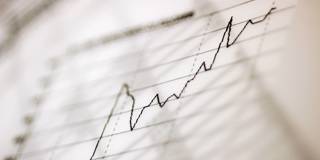After years of low inflation, investors and policymakers have settled into a cyclical mindset that assumes advanced economies are simply suffering from insufficient aggregate demand. But they are ignoring structural factors at their peril.
NEW YORK – Debates about inflation in advanced economies have changed remarkably over the past decades. Setting aside (mis)measurement issues, concerns about debilitatingly high inflation and the excessive power of bond markets are long gone, and the worry now is that excessively low inflation may hamper growth.
Moreover, while persistently subdued – and, on nearly $11 trillion of global bonds, negative – interest rates may be causing resource misallocations and undercutting long-term financial security for households, elevated asset prices have heightened the risk of future financial instability. Also, investors have become highly (and happily) dependent on central banks, when they should be prudently more fearful of them.
In search of new ways to produce higher inflation, the major central banks have tended to favor a cyclical mindset, making frequent references to insufficient aggregate demand. But what if that is the wrong lens through which to view current conditions, and we are actually in the middle of a multi-stage process in which strong disinflationary supply-side forces eventually give way to the return of higher inflation? In that case, monetary policymakers and market participants would need to consider quite a different opportunity-risk paradigm than the one currently being pursued.

NEW YORK – Debates about inflation in advanced economies have changed remarkably over the past decades. Setting aside (mis)measurement issues, concerns about debilitatingly high inflation and the excessive power of bond markets are long gone, and the worry now is that excessively low inflation may hamper growth.
Moreover, while persistently subdued – and, on nearly $11 trillion of global bonds, negative – interest rates may be causing resource misallocations and undercutting long-term financial security for households, elevated asset prices have heightened the risk of future financial instability. Also, investors have become highly (and happily) dependent on central banks, when they should be prudently more fearful of them.
In search of new ways to produce higher inflation, the major central banks have tended to favor a cyclical mindset, making frequent references to insufficient aggregate demand. But what if that is the wrong lens through which to view current conditions, and we are actually in the middle of a multi-stage process in which strong disinflationary supply-side forces eventually give way to the return of higher inflation? In that case, monetary policymakers and market participants would need to consider quite a different opportunity-risk paradigm than the one currently being pursued.